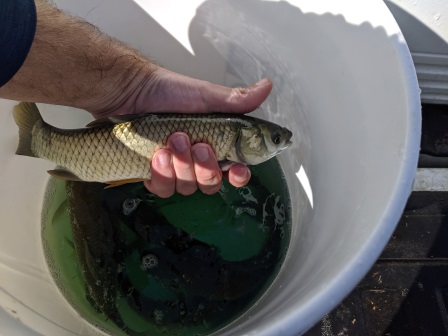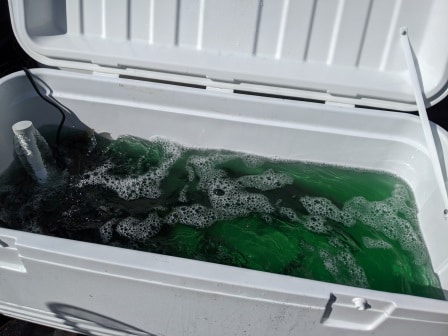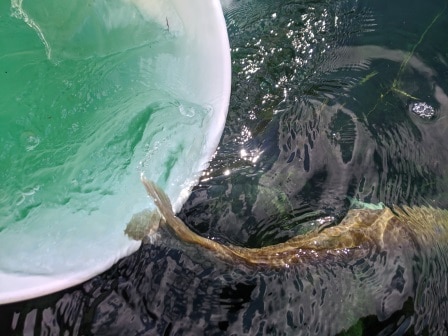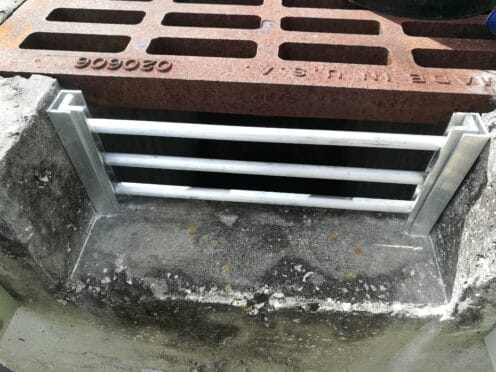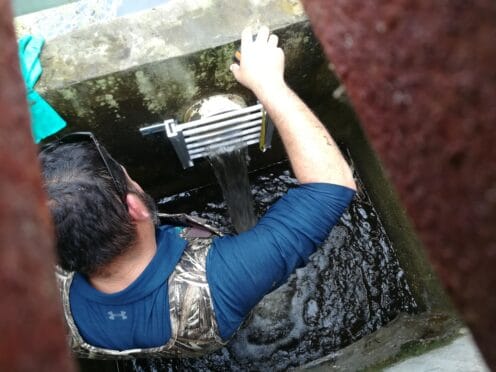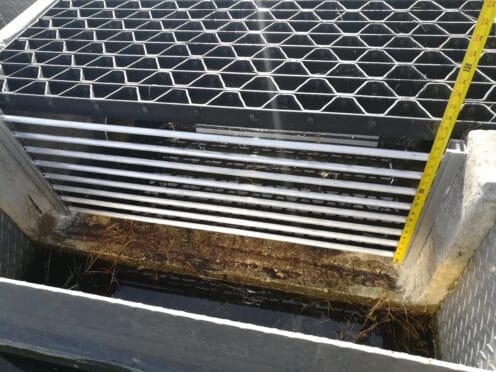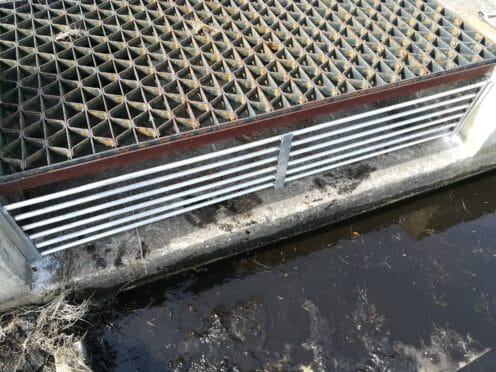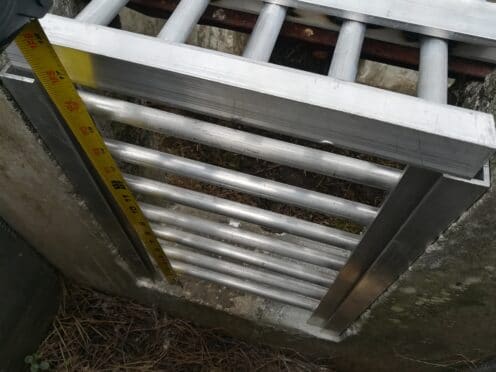Grass Carp: Is It Possible to Control Aquatic Vegetation Without Causing Environmental Damage?
Named for their ability to consume large varieties of aquatic plants – including duckweed, hydrilla, and others – grass carp have been used in ponds to control plant growth since their introduction to the United States roughly 60 years ago. Recently, I came across a report indicating that fertile grass carp have become invasive – and a major problem – in Lake Erie. Between the 1960s and 1980s, fertile individuals likely escaped from nearby ponds in which they were intended to act as a non-chemical herbicide. They quickly reproduced, growing and expanding the population. Because grass carp are substantial feeders, their explosive population growth has had major environmental consequences.
However, with the right management techniques, grass carp can be hugely beneficial depending on the goals of pond use, the likelihood of a fish-y escape, and the types of plants that need biological management. Here’s a more detailed look at this species and how to avoid excessive environmental risk.
Breeding & Sterilization
In the 1980s, states began regulating grass carp that were bred for use in pond management, requiring sterilization. Grass carp capable of reproducing are known as “diploid,” which means that they contain two complete sets of chromosomes. Sterilized individuals, however, are “triploid,” or have three sets of chromosomes and are unable to produce viable eggs.
Grass carp raised in hatcheries are sterilized via a technique that involves exposing the eggs to drastic temperature and pressure changes. Because the method is not 100% effective, the U.S. Fish and Wildlife Service manages the National Triploid Grass Carp Inspection and Certification Program (NTGCICP), which aids in certification of fish ploidy for suppliers. Today, sterilization regulations continue to prevent unwanted growth that could later damage the habitats these fish are intended to protect.
How Barriers Help
To further prevent the possibility of environmental damage, barriers have also become key components of pond infrastructure. As a riverine fish, grass carp are similar to salmon in that they typically spawn in flowing water. Attracted to that natural flow, fish will escape from their lakes and ponds if there are no barriers to inhibit them. A strong, well-designed barrier is critical in preventing ecological damage – and, as an added bonus, they protect the investments in a grass carp program.
In fact, the State of Florida requires that pond owners and managers obtain a Triploid Grass Carp permit prior to obtaining any of the fish. As a condition of the permit, the Florida Fish and Wildlife Conservation Commission (FWC) states that the fish must be kept in the desired lake or pond, and prevented from escaping into inflows or outflows, with the use of barriers.
Why Barrier Design Matters
The FWC states that barriers must be sturdy and durable. Gaps between bars must not exceed 1.25 inches for 10-inch fish, or 1.5 inches for 12-inch fish. And in anticipation of Florida’s frequent rain events, it is important that pond managers allow for overflow to alleviate potential flooding. If these conditions are met, preventing grass carp from escaping the pond becomes much easier to manage.
Poor barrier design, on the other hand, will do little to prevent the fish from escaping or might even cause harm to the pond or lake. If openings are too small, plants, detritus, and other materials suspended in the water will be unable to pass through; if they are too large, the fish will easily swim away. Barriers must also be maintained regularly and designed to allow managers to regularly clean trapped debris that could prevent water flow.
Our Solution
At Florida Waterways Inc., our industry-leading carp containment barriers are designed to prevent these issues and ensure your investment (and the environment) is well protected. Constructed from welded aluminum, our barriers are mounted with handles, allowing for easy removal or periodic cleaning, and lockable to prevent vandalism or theft. This design ensures that the barriers are strong and easy to remove in case of flooding emergencies. They also require minimal maintenance, so you won’t have to worry about repainting or repairing rust.
And perhaps most critically, these barriers have a high success rate, preventing grass carp from escaping their lake or pond.
As a Freshwater Frog & Fish Dealer, and a FWC Authorized Triploid Grass Carp Supplier, we can help with your grass carp permitting and barrier needs! Give us a call to learn more about our carp programs, or check out the below resources if you would like to learn more about these fish:
Interested in learning more? Check out these resources:
University of Florida IFAS – Chinese Grass Carp
Florida Fish and Wildlife Conservation Commission – Triploid Grass Carp Permit
FWC Triploid Grass Carp and Aquatic Plant Management Presentation


